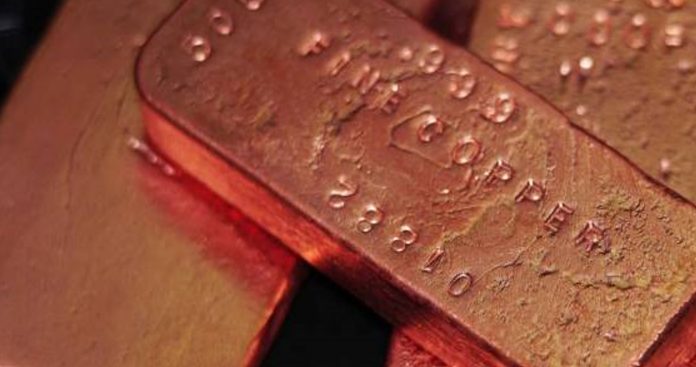Copper bullion, also known as copper bars or ingots, is a popular investment option for those looking to diversify their portfolio beyond traditional assets like stocks and bonds. As a commodity, copper has been used for thousands of years in various industries such as construction, electronics, and transportation. Its high conductivity, malleability, and durability make it a valuable material, and its price is influenced by supply and demand factors in the global market.
Investing in copper bullion can offer several benefits, including a hedge against inflation, a store of value, and a potential source of capital gains. However, like any investment, there are risks involved, and investors must do their due diligence and understand the factors that can impact copper prices. In the following paragraphs, we will explore the advantages and disadvantages of investing in copper bullion and provide some key considerations for investors who are considering this option.
Advantages of Investing in Copper Bullion
Hedge against Inflation
One of the key advantages of investing in copper bullion in futures is its potential to serve as a hedge against inflation. As an industrial metal, copper is used in various applications that are critical to economic growth and development. As a result, its price is closely tied to global economic conditions, and historically, it has shown a positive correlation with inflation. Investing in copper bullion can help protect investors from the erosion of purchasing power caused by inflation.
Store of Value
Copper bullion can also serve as a store of value, much like other precious metals such as gold and silver. Unlike paper currency, which can be subject to fluctuations in value and inflation, copper has intrinsic value as a physical asset that can be traded and sold. As a result, copper bullion can be a reliable store of value, especially in times of economic uncertainty.
Diversification of Portfolio
Investing in copper bullion can also provide diversification benefits to an investor’s portfolio. Traditional investments such as stocks and bonds are often highly correlated, meaning that they tend to move in the same direction in response to market conditions. Adding alternative investments such as copper bullion can help reduce the overall volatility of a portfolio and potentially increase returns.
Potential for Capital Gains
Copper bullion can offer the potential for capital gains, as its price can rise due to increased demand, decreased supply, or changes in market conditions. Unlike other investments such as stocks and bonds, copper bullion is not subject to the same fluctuations in price due to changes in corporate earnings or interest rates. Investors who purchase copper bullion at a low price and sell it when the price has increased can potentially realize capital gains.
High Liquidity
Copper bullion is considered to be a highly liquid investment, as it can be readily bought and sold on the open market. Unlike other commodities that may require specialized knowledge or infrastructure for storage and transport, copper bullion is widely traded and can be easily converted into cash. This high level of liquidity can provide investors with flexibility and make it easier to buy or sell copper bullion as market conditions change.
Risks Associated with Investing in Copper Bullion
The Volatility of Copper Prices
One of the biggest risks associated with investing in copper bullion is the volatility of copper prices. Copper prices can fluctuate greatly due to changes in supply and demand, global economic conditions, and political stability. As a result, copper bullion investors may experience significant fluctuations in the value of their investments.
Fluctuations in Demand and Supply
Copper bullion prices are heavily influenced by fluctuations in supply and demand. Factors such as changes in the production of copper mines, shifts in global demand for copper-based products, and geopolitical events that affect supply chains can cause sudden changes in copper prices. Investors in copper bullion must be aware of these factors and how they can impact the value of their investment.
Economic Conditions and Political Stability
The price of copper can also be heavily influenced by global economic conditions and political stability. Economic recessions, geopolitical tensions, and changes in government policies can all affect copper prices. For example, changes in trade policies or tariffs imposed on imported copper can significantly impact the supply and demand dynamics of copper markets, which can in turn affect the price of copper bullion.
Counterfeit and Fraudulent Bullion
Investors in copper bullion also face the risk of counterfeit and fraudulent bullion. While reputable dealers and third-party grading services can help mitigate these risks, there is always a possibility of fake or tampered bullion entering the market. Investors must be vigilant and take steps to ensure the authenticity of the copper bullion they purchase.
Storage and Insurance Costs
Investing in copper bullion also requires storage and insurance, which can add to the overall cost of the investment. Bullion must be stored in a secure location to protect against theft, damage, or loss. Additionally, investors must consider the cost of insurance to protect their investments in case of theft or damage. These storage and insurance costs can add up over time, reducing the overall returns on the investment.
Factors to Consider Before Investing in Copper Bullion
Market Analysis and Forecast
Before investing in copper bullion, it is important to conduct a market analysis and forecast to determine the current state of the copper market and the potential for future growth. Investors should consider factors such as global economic conditions, changes in supply and demand, and geopolitical events that may impact copper prices. This analysis can help investors make informed decisions about when to buy or sell copper bullion.
Type and Purity of Bullion
Investors should also consider the type and purity of copper bullion they plan to purchase. Copper bullion is available in various forms, including bars, rounds, and coins, each with its unique features and characteristics. Additionally, the purity of copper bullion can vary, with some bullion containing other metals or alloys. Investors should choose the type and purity of bullion that best fits their investment goals and objectives.
Purchase Price and Premiums
Investors should also consider the purchase price of copper bullion and any premiums associated with the purchase. Premiums are additional costs associated with purchasing copper bullion, such as minting fees or dealer markups. These costs can impact the overall return on investment and should be carefully considered before making a purchase.
Dealer Reputation and Reviews
Investors should only purchase copper bullion from reputable dealers with a proven track record of providing high-quality products and excellent customer service. Before making a purchase, investors should research the dealer’s reputation and read reviews from other customers to ensure they are making a safe and secure investment.
Tax Implications and Regulations
Investors should also consider the tax implications and regulations associated with investing in copper bullion. Depending on the country and region, there may be taxes or regulations that impact the purchase and sale of copper bullion. Investors should research these factors and consult with a financial advisor or tax professional before purchasing to ensure they are fully informed of the risks and benefits of investing in copper bullion.
Disclaimer: This article contains sponsored marketing content. It is intended for promotional purposes and should not be considered as an endorsement or recommendation by our website. Readers are encouraged to conduct their own research and exercise their own judgment before making any decisions based on the information provided in this article.




































































